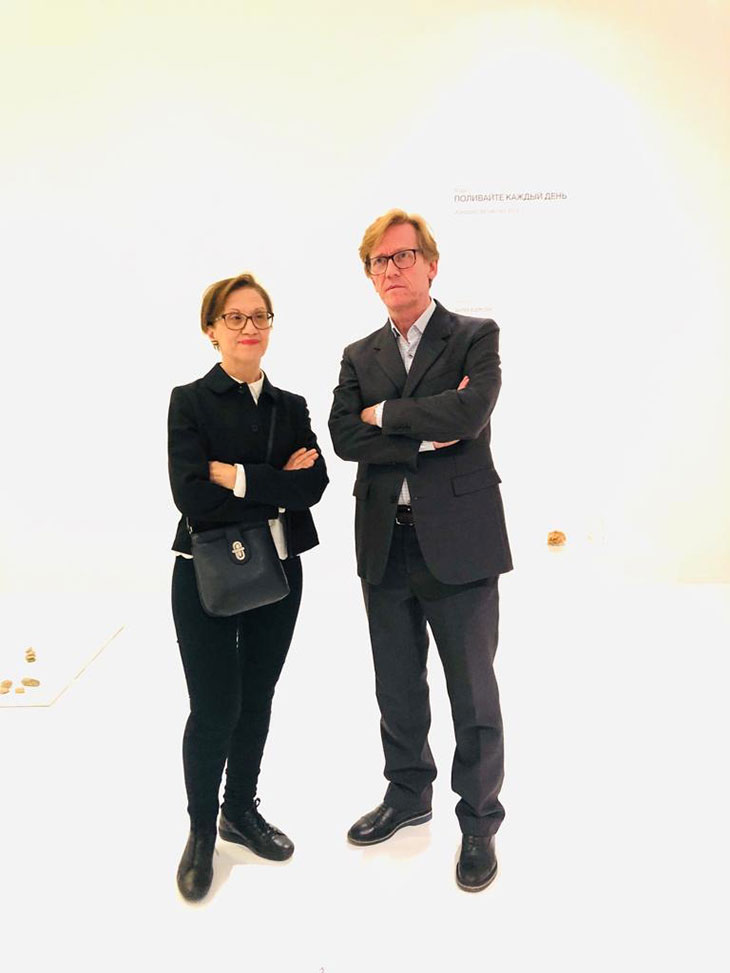
Belgrade’s cultural scene is forging defiantly ahead. In June, the city’s art scene was revived by opening of the 58th October Salon | Belgrade Biennale, and this November we have the pleasure to announce “Image to Image”, a major exhibition dedicated to European figurative art curated by Danielle Kvaran and Gunnar B. Kvaran (who also curated the 57th October Salon in 2018).
ART
Curators Danielle Kvaran and Gunnar B. Kvaran talk exclusively for DSCENE Magazine about their upcoming exhibition “Image to Image”, European figurative art and contemporary art scene.
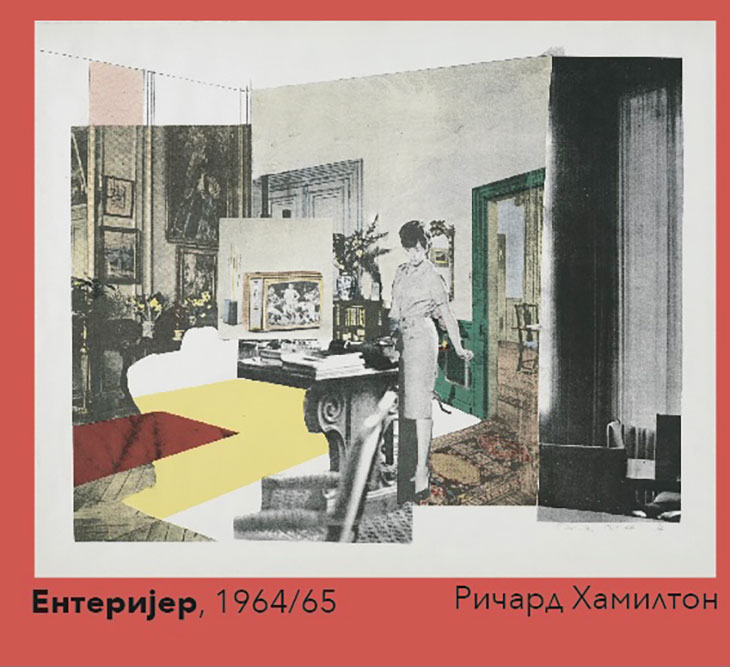
What is the idea behind this exhibition entitled IMAGE TO IMAGE?
DK: Progressively after the second world war in Europe there appeared a number of younger artists who turned their back against the abstraction, informal and geometrical, but also against the traditional figurative painting and the conventional trend of socialist realism in force in Eastern Europe. They began to develop figurative and object-based works largely grounded on quotations, using existing images from magazines, already mediatized, or their own photography to reflect up on this new society, characterized by consumerism, mass culture, technological progress, social conflicts, the cold war and colonial wars, and on their own personal existence. Their works were intended as acts of resistance to any form of aesthetic, moral or political authority.
We thought that it would be interesting to gather works by some of these artists who, in fact, did revolutionize the notion of figurative art, and to cast a light on this important period in European art history. This exhibition shows a constellation of European artists who individually abandoned inventing form and figures or “working from nature” in a traditional sense and choose to use second hand images (photography and printed materials) in their creativity process to create new kind of paintings and graphic works. Even though the second image was a common feature, they all came to quite various results due to their personal artistic intentions and their social, political and cultural background. Their artistic invention lies within the transformation and the processing of the images and how they are organized on the canvas and others supports to create original works of art.
This exhibition goes beyond artistic movements and groups by looking at individual artists and what they have achieved. Revitalizing the tradition of ready-mades, collages and assemblages these artists wanted to create original artistic languages appropriate to show the reality of their times.
What did characterize the European art scene at that time?
GBK: The times, after the second world war in Europe, became artistically extremely fertile, complexed and exciting. Radical changes took place in the society. The “consumers society”, a capitalistic invention, strongly influenced by the Americans, created a novel lifestyle for everyday people. By consequence it would produce the consuming middle class that became an important social force in Europe. This was a time of increasing social conflicts, colonial wars and the cold war between the east and the west. Younger generation of people in Europe raised new questions about more liberty and social justice.
Awareness, among young contemporary artists, of new social, cultural and political conditions led during the 1950s 1960s and the 70ties to a profusion of artistic reactions within the European avant-garde, including Happenings, Fluxus, Nouveau Realism, Pop art, Figuration narrative, as well as significant innovation in the fields of experimental film and literature (including the French Nouvelle Vague and Nouveau Roman). Many artists proposed a new kind of “realism,” and during the same period, artists were edging towards an engagement with popular culture, investing it with symbolic and sign value through a vision colored by the socio-cultural contingencies of the time. Art entered a postmodern world of appropriation, simulation, and recycling of pre-existing concepts, motifs, and objects, and familiar artistic conventions and styles were frequently handled ironically, cynically, and critically. Such recycled objects and images initiated narratives through stratagems of connotation and association, which both attested to and rendered our ambivalence to reality.
To complete the image of the period considered, it should be kept in mind that French writer and critic Roland Barthes introduced the idea of the “death of the author,” emphasizing how authenticity and personal experience were on the wane within the new media society. Important sociologists like Guy Debord and later Jean Baudrillard began writing their seminal cultural critiques at this time. Debord, for example, stressed the fact that our visual world was no longer “real,” since all direct experience had been replaced by mediated representation. He argued that this constellation of images and references – the ‘spectacle’ – holds together and governs society. Baudrillard took this further, writing that social reality was just a “simulacrum”, evaporating from one media representation to another.
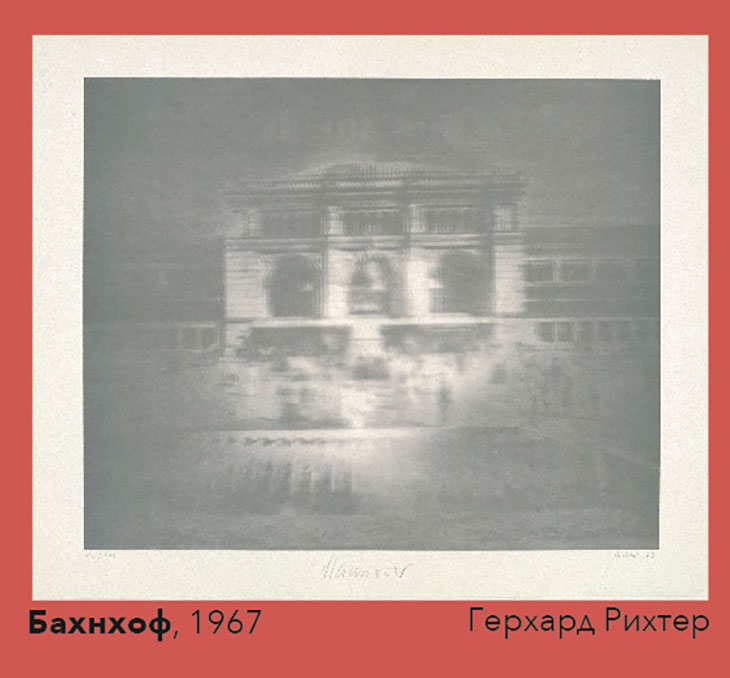
You seem to be looking more at individual artists then artistic movements.
DK: Geographically these artists who were reinventing the figurative art were spread out all over Europe, however with a certain concentration in cities like Paris and London, exploring their individual paths. Many of these artists ended up within artistic communities of fellow colleagues artists forming what became in some cases important art movements or groups of artists such The British Pop Art (Richard Hamilton), Les Nouveaux Realistes (Mimmo Rotella), La Figuration Narrative (Erró, Peter Klasen, Monory) The Realism Capitalist (Gerhard Ricther) and later The Sot Art (Erik Bulatov, Komar & Melamid). However, this exhibition goes beyond artistic movements and groups by looking at individual artists and what they have achieved. Revitalizing the tradition of ready-mades, collages and assemblages these artists wanted to create original artistic languages appropriate to show the reality of their times. They had different premises and intensions. Some were fascinated by the use of existing images as a new form of representation, others were more critical towards the society and the origin of these images. However, they all had in common the motivation of transforming the appropriated second-hand images and quotations into a personal artistic expression through the manipulation and the processing of the images, new kind of surprising colors, juxtapositions and associations of images, texture, compositions and narrative structures. Richard Hamilton made collages which hold an ambiguous attitude of being signs of new urban popular culture and as, at the same time, they wanted the reveal the process and mechanism of manipulation of that same industry. Mimmo Rotellareversed the notion of the collage when he creates the dé-collage, where he appropriates posters from the city, tears of the posters and reconstruct them on the canvas in his studio. As a reaction to the hypertrophic development of consumer society and the unprecedented flow of mass-culture-driven imagery, and believing that “everything, absolutely everything, has already been photographed, filmed, drawn,” Erróbegan devoting his time to the patient and playful work of compiling, questioning, and overturning the image-signs that saturate the social space and supplant reality. Valerio Adami deconstructs and subtracts the images, reducing them to fragments that can still hold the semantics of the original. Then begins the act of transforming them into a painting with bold black lines, that echo the drawing of cartoons, and fields/forms of pure colors that could have their origin in the geometrical modernistic paintings. In his paintings Jacques Monory stages scenes from his own personal history or fictions based on photographs taken by himself. The paintings that are generally composed with rather few images, stay close to the aesthetics of photographic images and recalls a cinematographic narrative. Peter Klasen appropriates images, from magazines or his own photographs, to create his own iconography and narratives and by processing of the images with a help of an episcope and an aerograph airbrush. The isolated objects and the fragmented body are juxtaposed on the canvas as signs, but always in a state of highly elevated aesthetic, that cognitively engage the spectator. Gerhard Richterimages were mainly of anonymous people found in magazines, newspapers and books, and photographs from his family album, which he painted onto the canvas using a blurring technique. His trademark technique, which both simulated and challenged the source images, represented a totally new method of painting and served to anchor and define his artistic identity. As we can see there is a great diversity of original artistic languages, aesthetics and narratives among these artists who often have been reduced to be contained in an artistic movement that in fact always comes afterwards. The Austrian Kiki Kogelnik approaches the image of the media and consumers society with a critical view, stating the denaturalization of the woman body and the overwhelming emptiness in their representation. She deconstructs the image/body to reveal the hybrid – cyborg – future vision of the human being. The Croatian sculptor Vera Fischeris also known for her collages and assemblages made in the 60ties which are characterized by the impressive accumulation and richness of their narratives which gets sources from newspapers and magazines and personal iconography to address and express the tumult and chaos of her time. The Russia Erik Bulatov appropriates images from post cards or famous art works as well as symbols from the political soviet regime and adding powerful but ambiguous sentences to create works of contradiction related to the formal space and the surface of the painting and the “confusing” (romantic and politic) content. Highly political. Other Russian artists Vitaly Komar and Alexander Melamid questions among other the systems of iconographies of social realism and soviet propaganda imagery by adding intrusive iconic elements. Revealing and subverting their narrative mechanism of storytelling. The Serbian Dusan Otasevic appropriated and diverted the official iconography from the time of Tito as well as including his borrowed images into more of a conceptual reflection and strategies.
However, there were also important artistic activities taking place in other parts of Europe – the Nordic countries, Dusseldorf, the Balkans, Milano, Barcelona, Amsterdam, -leading to a more fragmented and decentralized European art scene as we can clearly experience now a days. In the last decades we have witnessed an increasing horizontality in the European art world with a consolidation of many different centers.
In your view, were there some art centers or cities that canalized these new figurative artists?
GBK: Even though, with the emergence of other European cities, especially London, and the growing domination of New York, the French capital could no longer claim to be the world center of art, it remained a lively crossroads that attracted visual artists of all nationalities and all tendencies, continuing as a laboratory of encounters and exchanges between the upcoming generations and the pioneers of the historical avant-garde movements, as Dadaism and Surrealism. But it was also a site of intervention for young French and foreign artists, painters and sculptors, installation and pure conceptual artists, whose works attempted to bring art closer to life, yet without falling into a conventional form of realism. Situating themselves somewhere between sociological assessment and critical discourse, they brought about a return to images and objects borrowed directly or indirectly from the urban, industrial, commercial, and media environment, through different forms of art (ready-mades, collages, dé-collages, happenings, installations etc.) that often defied the traditional categories of drawing, painting, and sculpture. However, there were also important artistic activities taking place in other parts of Europe – the Nordic countries, Dusseldorf, the Balkans, Milano, Barcelona, Amsterdam, -leading to a more fragmented and decentralized European art scene as we can clearly experience now a days. In the last decades we have witnessed an increasing horizontality in the European art world with a consolidation of many different centers.
In their practice, artists call the images of the world into question, defusing their seductive power and “detourning” theirs contents. They help us to see differently what we have already seen. They disaccustom our gaze, force it to consider other perspectives.
Is this a relevant exhibition in terms of contemporary art?
DK: This exhibition is a reminder of the invention of ready-mades and collages in the beginning of 20th century and of a certain revolution within figurative art and paintings after the second world war. However, it contextualizes what is still an important strategy and a toolbox among many contemporary artists and has been for the last 20-30 years. The premises of the artists in the exhibition which are the overwhelming flow and manipulating forces of images is still even more relevant than it was 40-50 years ago. Adding the volume and the speed of internet and social medias to the distributing network of images (including moving images and music) and texts the public is being touched by a maneuvering and manipulating energy that doesn’t seems to have no limits. It is important to be aware of this situation and the artists are often more capable of revealing mechanisms behind such productions. In their practice, they call the images of the world into question, defusing their seductive power and “detourning” theirs contents. They help us to see differently what we have already seen. They disaccustom our gaze, force it to consider other perspectives.
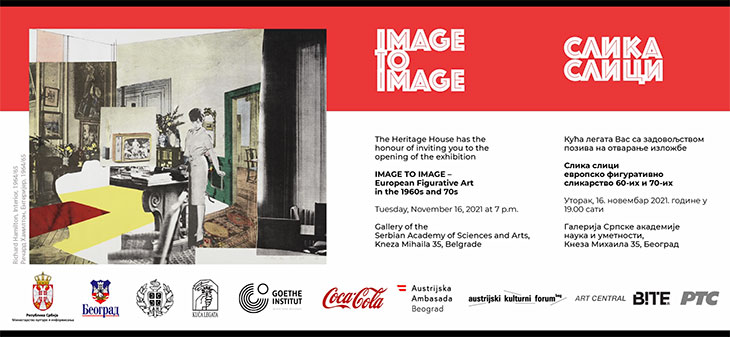
“Image to Image” opens on November 16th at the Gallery of the Serbian Academy Of Sciences And Arts. The exhibition will feature works by the following authors: Richard Hamilton (1922-2009), Jacques Monory (1924-2018), Erró (1932), Mimmo Rotella (1918-2006) ), Dušan Otaševi? (1940), Eduardo Arroyo (1937), Alain Jacquet (1939-2008), Gerhard Richter (1932), Miodrag Mi?a Popovi? (1924-1196), Aleksandra Cvetkovi? (1947), Božidar Damjanovski (1947), Andrej Jemec (1934), Vera Fischer (1925-2009), Kiki Kogelnik (1935-1997), Franc Berko (1947), Evelyne Axell (1935 – 1972), Peter Klasen (1935), Peter Stämphli (1935), R.B. Kitaj (1932-2007), Valerio Adami (1935) and Vladimir Veli?kovi? (1935–2019).
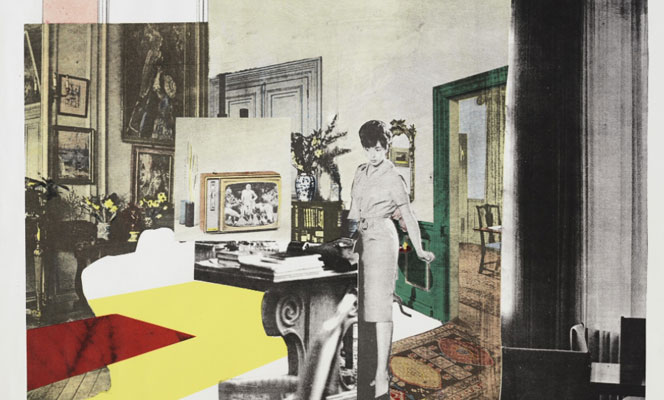













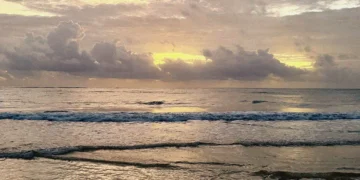
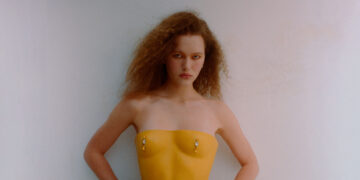
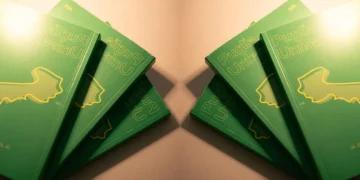
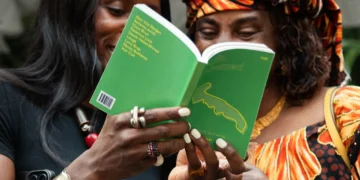
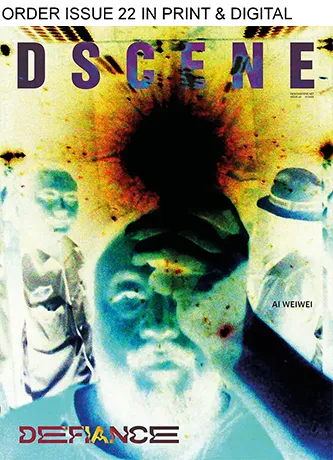

wow this is stunning! following their work for a while now
An amazing exhibition in Belgrade, curated in such a genuine way! Fabulous pieces of art you can see in there!